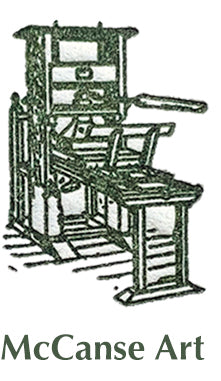
Thomas Albert Stone was born in Fownhope, England in 1897. Stone arrived in Edmonton, Alberta in 1914 in his late teens, possibly with his family, soon moving to Vancouver. Shortly after, Stone enlisted in the military and spent four years overseas during the first World War. In 1918, Stone settled in Vancouver and took evening art classes with artist Charles Hepburn Scott. Stone would become known for his winter landscapes and his depictions of light on water.
By 1921, Stone was living in Toronto and studying at the Ontario College of Art (now OCAD), taking courses with G.A. Reid, Arthur Lismer, J.W. Beatty, J.E.H. MacDonald, H.H. Stanfield, Emanual Hahn, and Frederick Horseman Varley. Stone graduated in 1925 and continued post-graduate studies for another two years.
Following his studies, Stone departed for Europe, working and studying in Paris at several academies, including Academie Julian, La Grande Chaumiere, Academie Moderne. He also studied with Andre Lhote, who was a figurative cubist painter. Stone produced many landscapes in oil and watercolour of the Swiss Alps and in rural France.
Rare evidence of his abilities and interest in modernist figurative composition is seen in his oil painting Landscape Near Port Hope (Resting), c. 1927. In a flattened space, Stone depicts seven contemporary symbolic figures in a utopian landscape, rendered in French spring-like hues that create a lively patchwork of colour. The female figures wear bobbed hair; one plays a mandolin, another holds a book, one is curled up (asleep), and another holds a baby; behind this group, a mysterious couple hold each other in embrace.
In 1928, Stone and fellow Toronto artist Charles Goldhamer published Lithographs of Ontario in an edition of two hundred portfolios, which featured an introduction by Arthur Lismer. Each portfolio comprised fifteen monochrome lithographs in brown or grey ink. Stone’s lithographs show a range of rural subjects, including a dock and boats in Tobermory, a rhythmic composition of a predominant tree and horses in a field in Ontario Pastorale, a winter landscape with a sleigh in Winter Road, and sunlight playing across rolling hills and modest dwellings in Parry Sound. Stone was a member of the Ontario Society of Artists (OSA) when he published this portfolio.
Upon his return from Europe in 1929, Stone was honoured with a solo exhibition of fifty-four paintings depicting pastoral an architectural scenes from France and Switzerland at the Art Gallery of Toronto (now the Art Gallery of Ontario). The stock market crashed two days before the exhibition opened, slowing sales considerably. Later, Stone taught art at night school during the early years of the Depression.
In 1934, Stone exhibited his painting The Snowbound Trail at the Canadian National Exhibition in Toronto, which was then reproduced in The Studio, a British art magazine, in January of 1935. A reviewer in Saturday Night described Stone’s winter landscapes as thus: “…in general [they] are described in terms of pattern and light, and in some occur those representations of trees with great hanging blobs of fresh snow which he has made peculiarly his own” (October 29, 1938). In 1936, Stone exhibited three paintings (Birch Trees, Ottawa River, Transcontinental Highway, and Mattawa) at the OSA Annual Exhibition of Little Pictures at the Art Gallery of Toronto.
Tom Stone established a studio in Caledon, Ontario, where he produced oil paintings of landscapes throughout the seasons. Stone also portrayed villages, hunting camps, and portraits at the beginning of his career. He also produced etchings, dry points, and lithographs. Reviewer Augustus Bridle noted in the Toronto Star Stone’s shift in painting style, and that he had begun to “make a naturalist’s study” in his work; “Skies, trees, clouds, roads, hills, streams are all just living webs of paint put on, not to display technique, but to reveal nature” (December 1, 1942). In 1951, Stone and his wife Marion moved to Cataract, Ontario. He died there in 1978.
